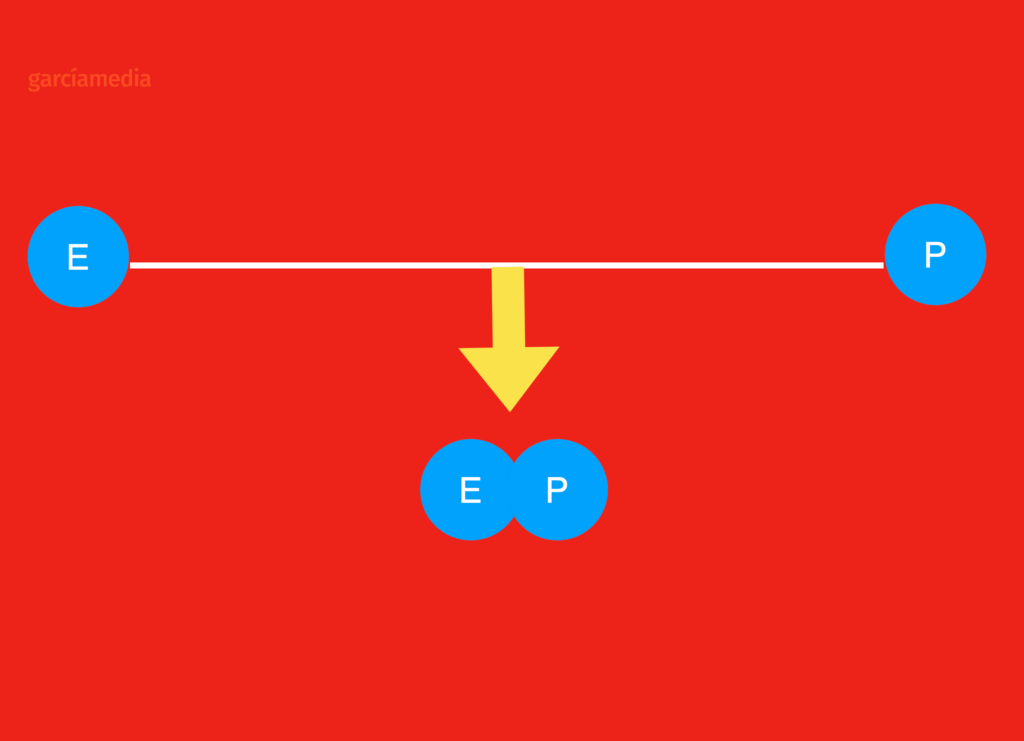
If there is a constant in the work that I do as a consultant in newsrooms around the world, it is what seems to be the challenge of good interactions between the journalists and the editorial team with those young, ambitious types in what is usually called the “product team”. The graphic above is one that I start my workshops with, as it describes in simple terms that bridge that exists between editors and product people, or ink versus code, if you will.
There has always been a product, of course. And there will always be one. When I first began my journalism career at One Herald Plaza, the building on the bay in Miami which housed both The Miami Herald and The Miami News, we had a morning product, The Miami Herald, and an afternoon product, The Miami News. As an afternoon newspaper, the product I worked with, The Miami News produced several editions, including a lunch time one, printed on pink paper with big headlines to create an appetite for the lunch crowd. A more moderate edition of the product, with smaller headlines and more emphasis on editorial and commentary appeared for delivery late afternoon. I remember one of my mentors, Howard Kleinberg, reminding editors around the copy desk about the importance of crafting headlines in a certain way for each edition. Here is a typical afternoon edition of The Miami News in the 1960s:
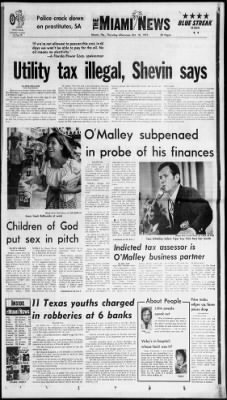
I guess Kleinberg was editor and product manager, since he also dealt with the size of visuals, the placement of stories and would go downstairs to the printing department to give each page a final review, pointing at those metal sticks of type where he wanted some lines deleted, or more space added between lines.
Indeed, we had a product and we had people designated to do what the product teams of today do—concern themselves with the technical aspects of production.
So what has changed?
Enter the new techies
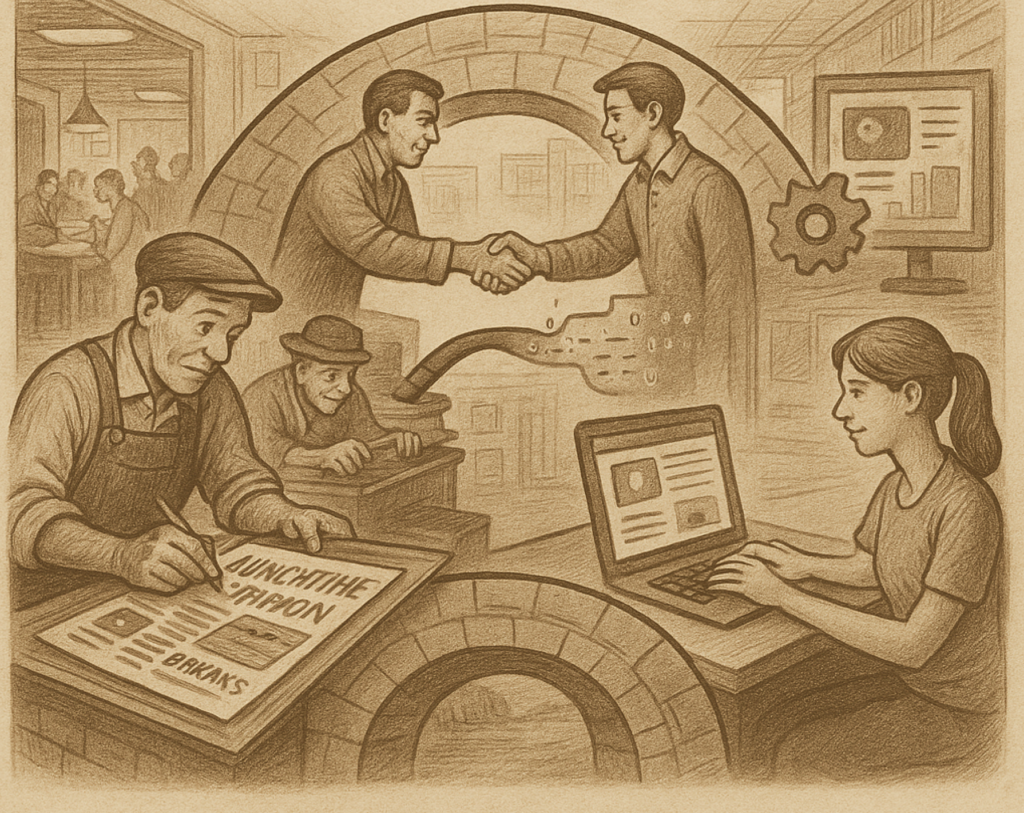
In that newsroom of The Miami Herald and The Miami News of the 1960s, the technical people resided on another floor and they were printers. They usually had ink on their fingers and from time to time you would see a big of ink on their noses too. Many of those printers would wear overalls and it was easy to differentiate them from the more sophisticated and dapper journalists in the newsroom.
Product technology was relegated to experts residing on a different floor .
Enter the techies
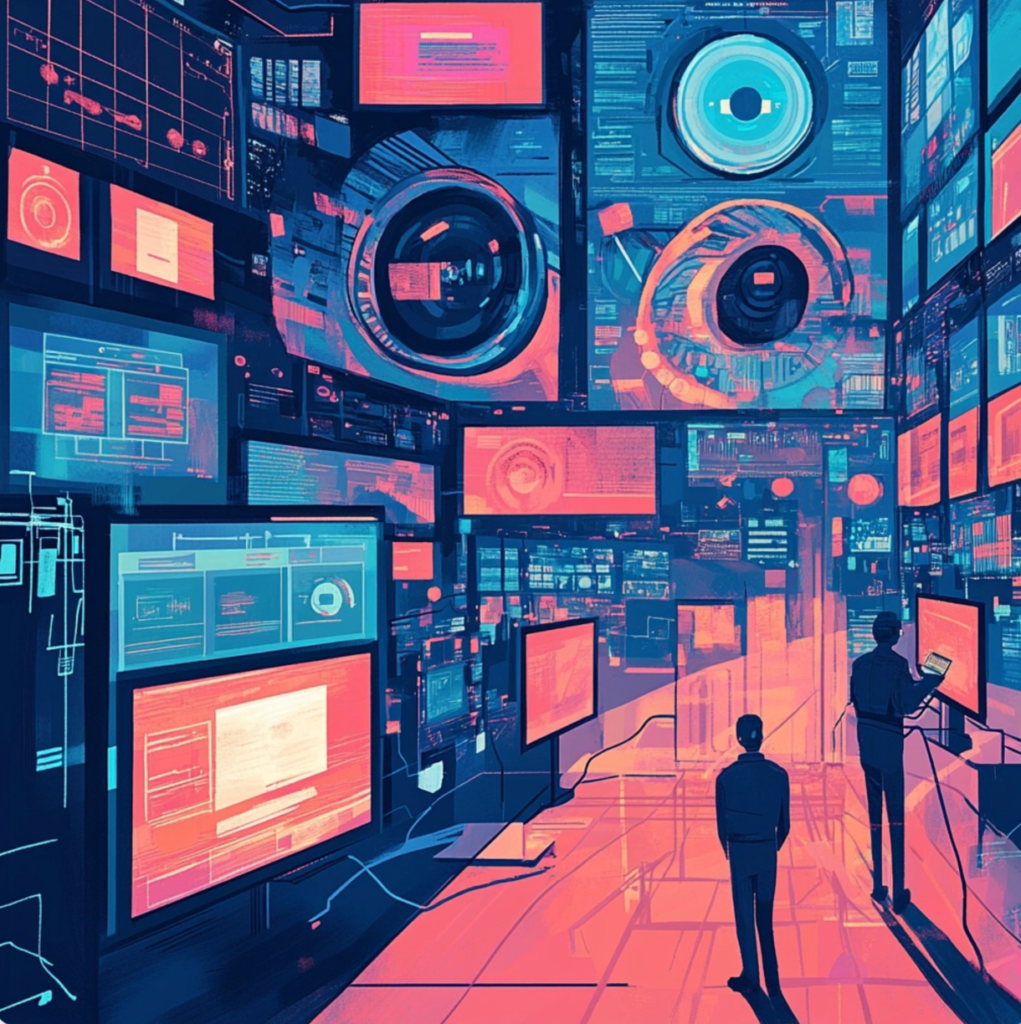
Today, in a digital environment, technology has moved to the penthouse. Those who deal with technical aspects of content creation are usually seated not so far from their colleagues, the journalists, in the newsroom. Many of these product types are highly trained, some with master degrees in computer science.
To many journalists, especially some of a certain age, the product people are today’s version of the printers in overalls with ink on their noses. It is as simple as that.
So, and this is the takeaway: I observe that there are gaps in how journalists and product people communicate with other. Product people do not get invited to many news meetings where their presence should be a must.
Ah, but, in my view, the most successful operations for mobile first initiatives, where mobiles storytelling thrives, are those where editorial and product people are fully integrated, enjoy exchanging ideas and rejoice when a great mobile story appears, with the fusion of text and visual assets such as videos and audio.
It is a simple equation: in a modern newsroom content should be created as a joint process between journalists and product people.
Indeed, we always had a product that needed to be produced.
Today, that product can’t exist at its best without the full cooperation of those two essential teams.
Takeaway tip:
The most efficient and functional fusion of the editorial and product people starts when product people sit in news meetings, engaging in the discussions of content priorities, offering ideas for how certain stories could be best created as mobile first with videos and audios as part of the visual assets incorporated into the narrative. In the best mobile first newsrooms, nobody flies solo. Reporters, editors, product people work as teams. The readers benefit the most.
Our workshop deals with the two big revolutions facing editors
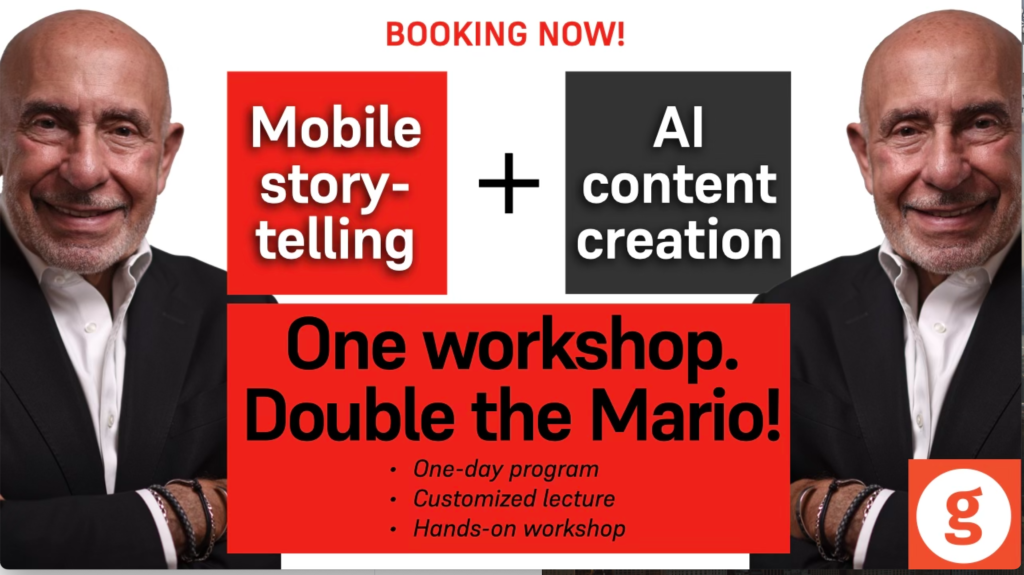
For me, it is imperative that editors approach content creation thinking in terms of mobile first.
Mobile first involves the type of transformation where all content is prepared thinking from small to large platform. Thinking small platform does not mean that the reporter conceptualizing a story for mobile consumption should not think BIG. So, plan from small to large, but think big in terms of the story content and the visual assets that go with it.
While mobile first is still elusive to so many newsrooms around the planet, here we are, in 2024, faced with an even bigger challenge not just knocking at our doors, but already IN: Artificial Intelligence.
Transformation and a change of mentality to face these challenges is the first step. Training and education to tackle them with a sense of focus and direction is essential.
That’s where our Garcia Media workshops come in
Our Garcia Media Mobile Storytelling workshops introduce your editorial team to the way we write, edit and design for mobile platforms. This one-day program includes a presentation and a hands-on workshop. We’ve added a new segment about AI for content creation.
Newsrooms around the planet have gone mobile-first after a Garcia Media workshop!
Our Garcia Media Mobile Storytelling workshops are proven to introduce your editorial team to the way we write, edit and design for mobile platforms. It is a one-day program that involves a presentation (where I summarize my Columbia University class content), and follow it with a hands on workshop.
For details, to customize, and to book: mario@garciamedia.com
Media predictions for 2024
Every year, Harvard University’s Nieman Lab publishes what selected media people predict for journalism in the following years. You can find my own prediction here;
https://www.niemanlab.org/2023/12/ai-takes-center-stage/
Start writing or type / to choose a block
How we use AI
Honored to be mentioned here:
https://www.newsroomrobots.com/p/how-10-news-industry-leaders-use
Order my AI book here:
https://thaneandprose.com/…/preorder-ai-what-to-expect…
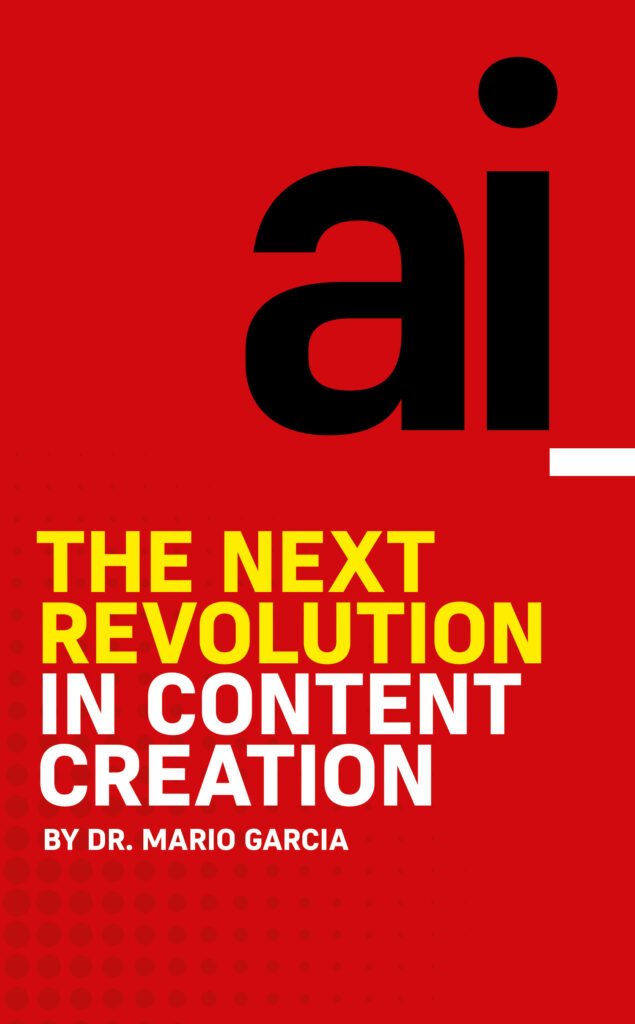

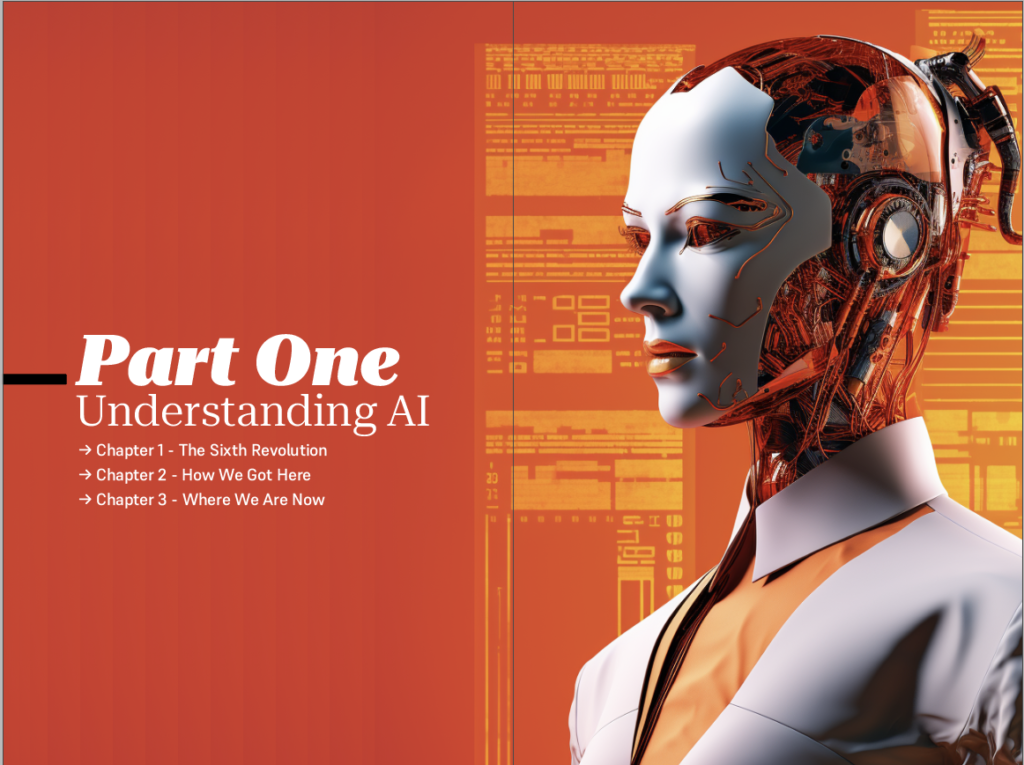
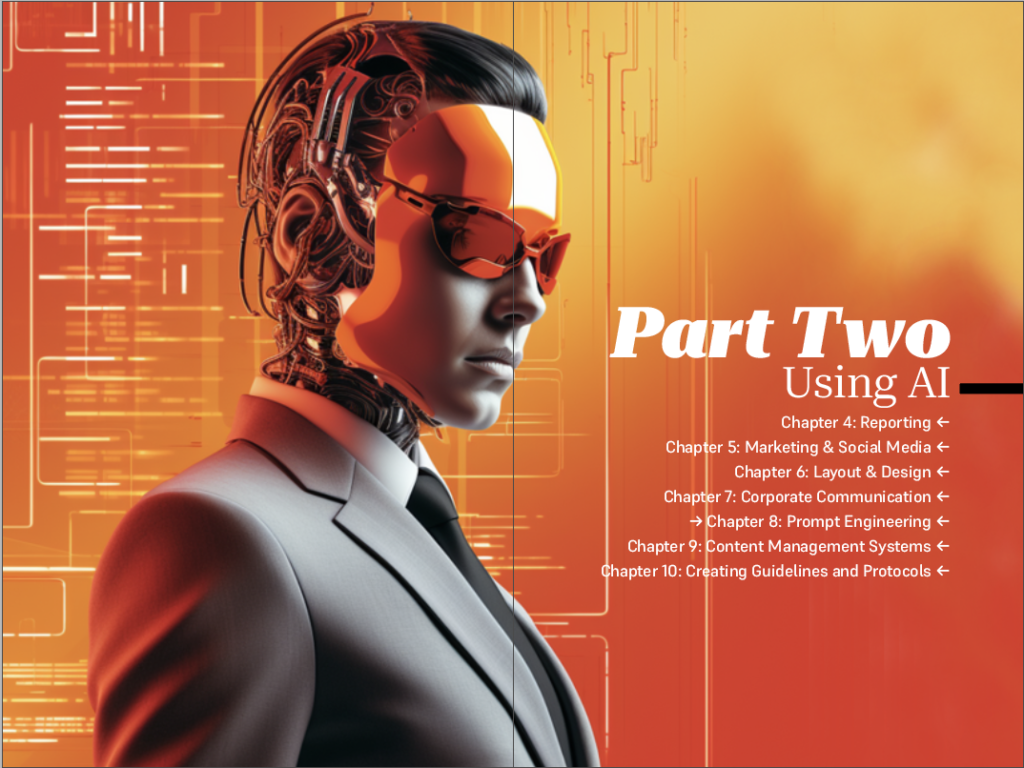
Here is a chance to pre-order my new book about Artificial Intelligence and content creation. The first 25 copies sold will be signed! Order here:
https://thaneandprose.com/…/preorder-ai-what-to-expect…
Reviews for AI book:
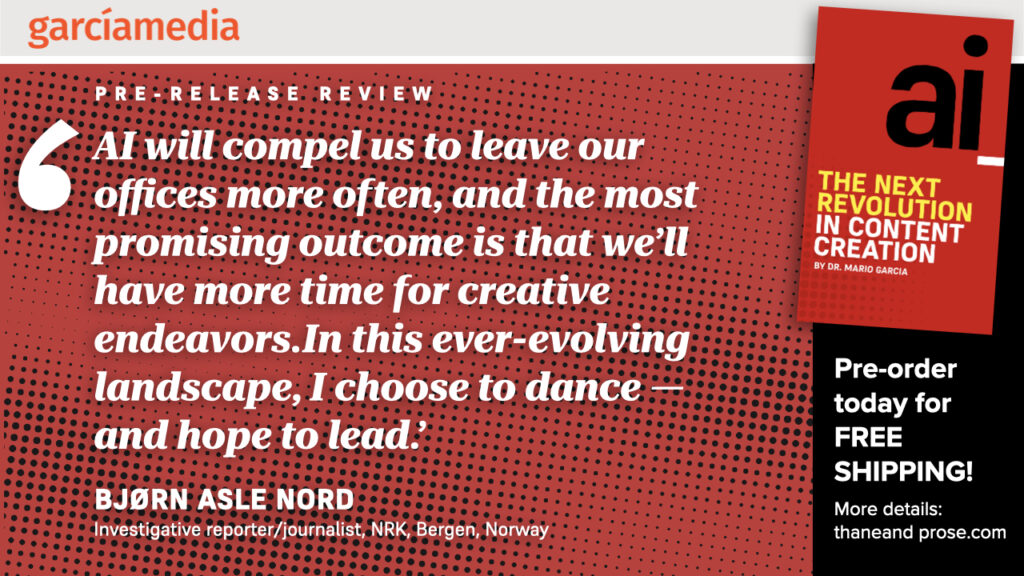
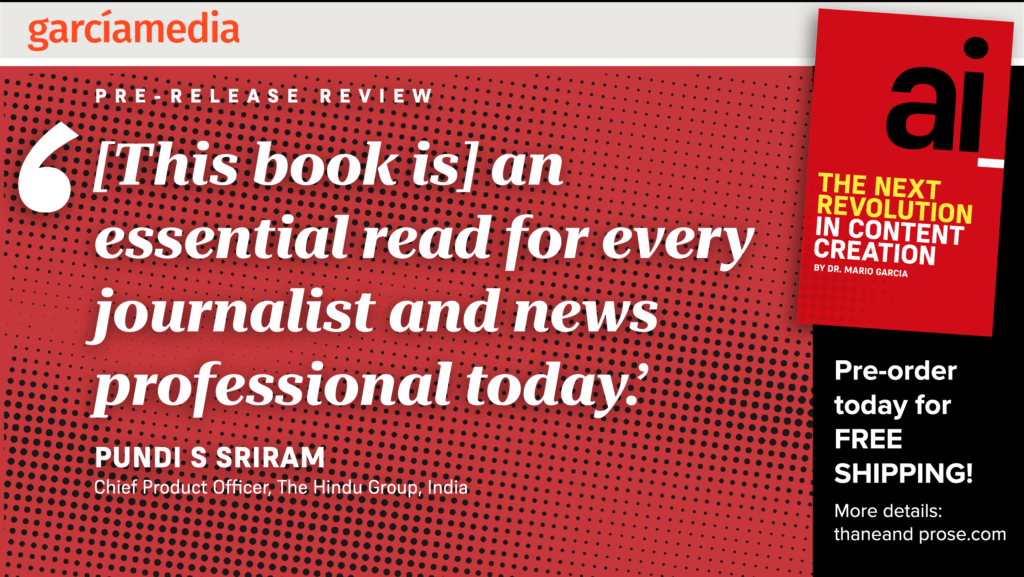
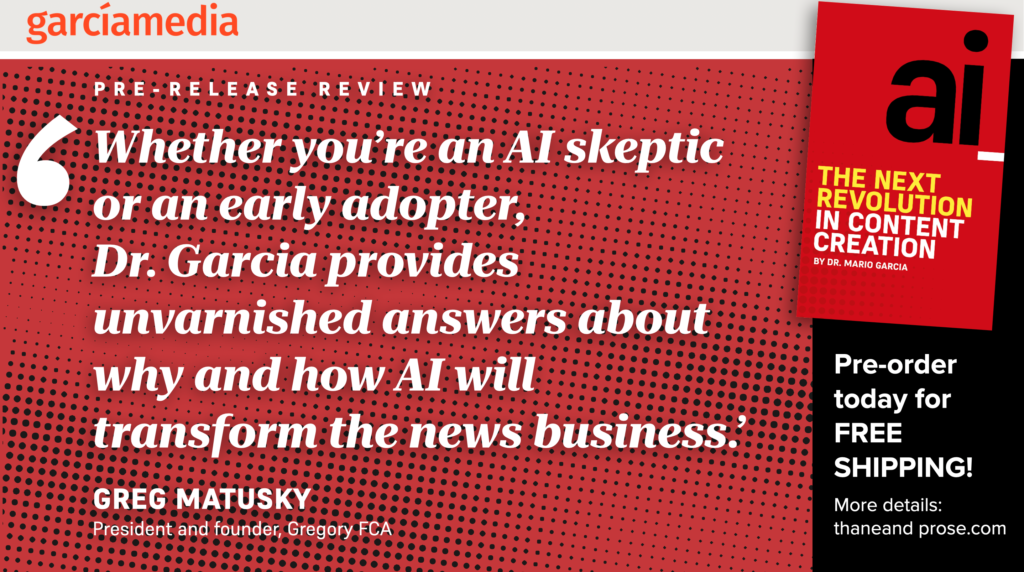
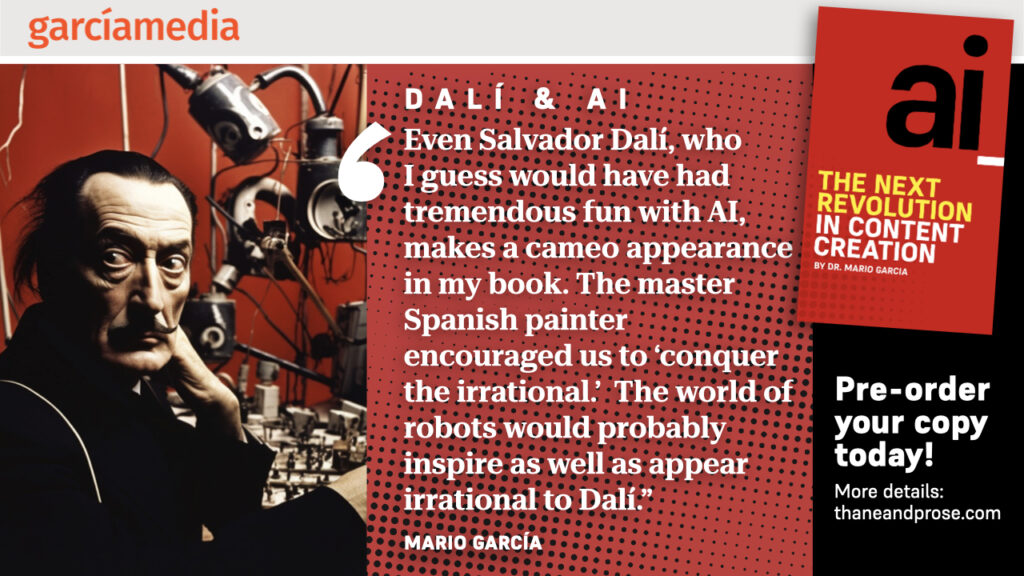
Did you read The Story yet?
I urge you to consult my latest book, The Story, a trilogy full of tips and explanations about mobile storytelling, which represents the latest genre for journalists to explore. See information below:
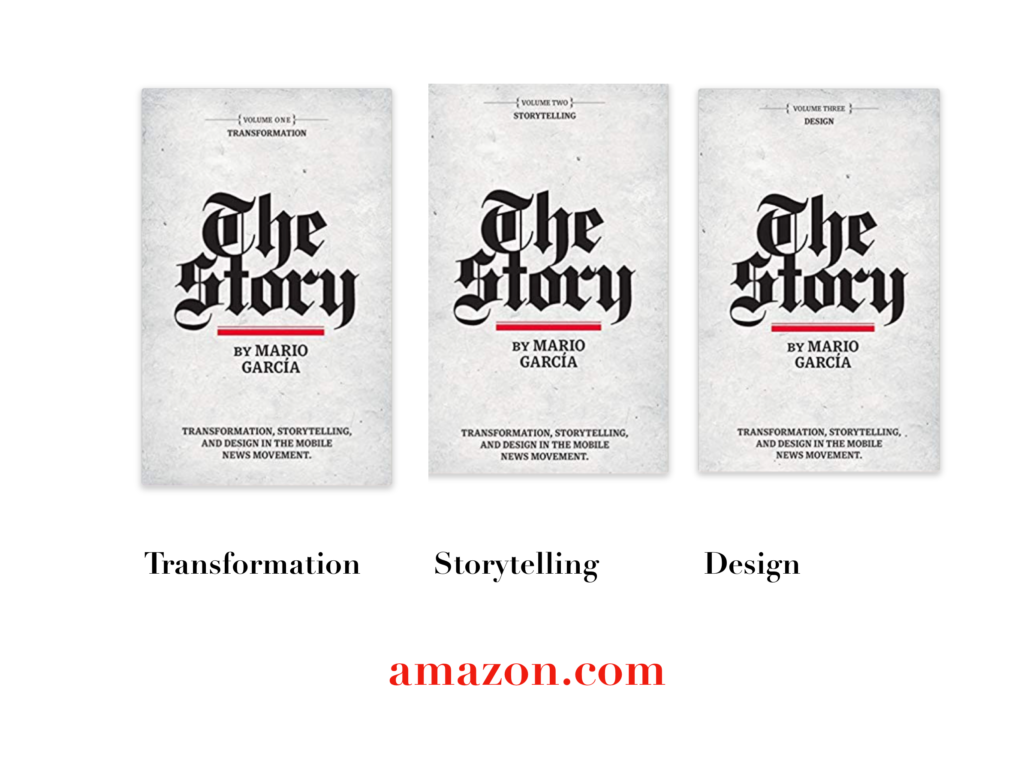
The full trilogy of The Story now available–3 books to guide you through a mobile first strategy. Whether you’re a reporter, editor, designer, publisher, corporate communicator, The Story is for you! https://amazon
Volume 1: Transformation
https://books.apple.com/us/book/the-story-volume-i/id1480169411
Volume Two: Storytelling
https://books.apple.com/us/book/the-story-volume-ii/id1484581220
Volume Three: Design
https://books.apple.com/us/book/the-story-volume-iii/id1497049918
Order the print edition of The Story, from Amazon, here:
TheMarioBlog post #4003